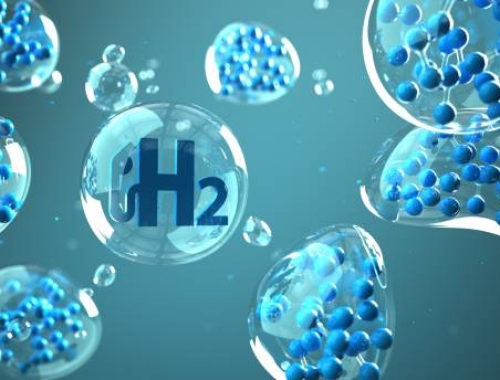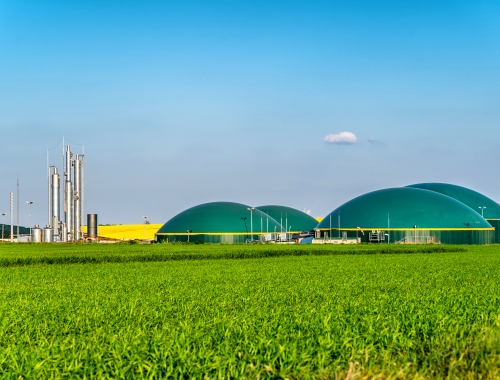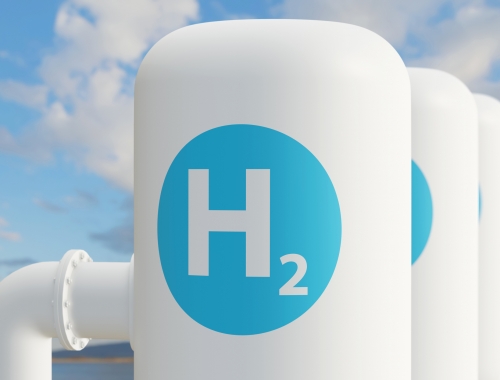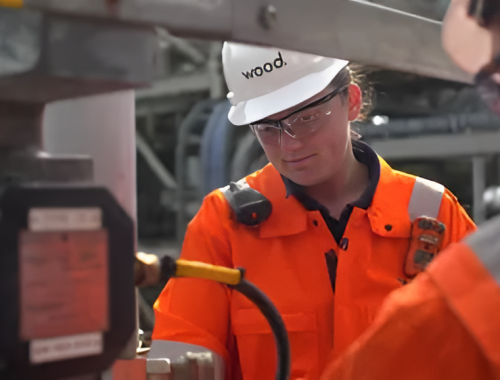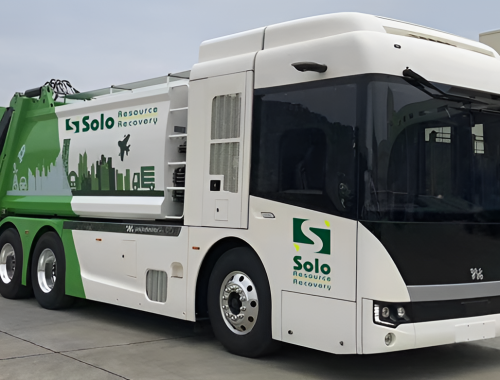Black & Veatch on decarbonisation trends, role of gas in Asia: interview
SUMMARY
The company sees the role of natural gas as a transition and destination fuel, enabling the production of clean energy in various forms. [image credit: Black & Veatch]
By Shardul SharmaThe decarbonisation journey in Asia brings both challenges and opportunities. Black & Veatch, with their experience in the energy sector, recognises the need for a holistic approach to achieve a sustainable energy future. The company sees the role of natural gas as a transition and destination fuel, enabling the production of clean energy in various forms such as electrons, blue hydrogen, and even feedstock for food supply.
Narsingh Chaudhary, executive vice president and managing director, Asia-Pacific, Black & Veatch spoke with GasPathways about decarbonisation trends in Asia, the challenges and the opportunities, the role of natural gas and LNG as a transition fuel towards net-zero and the company’s solutions for this industry.
Tell us about the opportunities and challenges presented by decarbonisation trends in Asia.
The energy transition in Asia has already started. It is far from straight forward and presents challenges and opportunities for investors, industry, and nations throughout the region.
As we know, we are living today in a VUCA (volatility, uncertainty, complexity and ambiguity) world, with the industry facing unprecedented challenges. This requires thinking holistically about our energy systems and how these resources can be engineered to return the most sustainable outcomes for our planet and our people, while also returning a sustainable financial benefit for commercial organizations.
Talking of the opportunities today, leading thinkers in our industry are considering how electrons, molecules and microbes can work together to help prepare for the challenges of decarbonisation. Natural gas sits within this nexus as a sustainable resource for the planet, dependent on how we plan and design our systems.
Natural gas has a role as a transition and destination fuel. It can be converted into electrons on the grid, as blue hydrogen that will enable a green hydrogen economy by 2050 and possibly even as a feedstock to produce much-needed food supply for the region. This creates indefinite opportunities for the industry.
Converting gas molecules into electrons are exemplified by the demand to secure LNG supply and build LNG-to-power facilities in the region, while palpable interest exists in carbon capture and hydrogen production that could be converted into sustainable aviation fuels or other carbon-free products to fuel a greener economy.
As for microbes, one example is a first-of-a-kind, commercial scale bio-fermentation facility in China that produces an alternative feed ingredient for aquaculture from natural gas, using less land, water and energy than other protein producers. Black & Veatch provided project management, process design and global procurement expertise as part of a consortium that built the facility.
Challenges surround optimising the commercial success of such investments. The offtaker market needs to be ready; the pricing needs to be competitive. Getting the timing right and the scale of investment is critical and can often demand relationships and dialogue with new customers, suppliers, different levels of government and regulators. Having a view across the commercial pathways is critical. Having a partner to reduce the risks as the enabling infrastructure is deployed is equally critical.
How important is it for Asia to integrate renewable energy and the addition of new natural gas infrastructure to achieve a sustainable energy future?
I believe simply increasing the levels of renewable energy alone will not achieve a successful energy transition in Asia, since the availability and demand of energy resources varies drastically across the region. Many Asian economies continue to see high growth in gross domestic product (GDP). This leads to higher demand of energy. In that respect, natural gas will continue to play an important role even in the mid to long term.
Grid stability concerns exist as more variable renewables are deployed. Our research shows that the electric industry in both mature markets, like the US, and in markets where renewable deployment is growing, including Asia, are concerned about accommodating variable renewable generation into existing grids.
The introduction of more renewable energy changes the very nature of electric grid management. Alongside improvements in transmission, distribution and storage solutions, natural gas can serve as a baseload transition lowering overall emissions in the near term.
As the energy transition continues with more renewable generation, the function of gas combustion turbines can evolve first as peaker assets and then, looking out beyond 2030, with blending or fully-firing hydrogen.
Gas-fired power generation has the quick ramp-up and ramp-down capabilities needed to adapt to changing grid energy demands. Today, advanced gas turbines in a simple cycle configuration can supply more than 400 MW to the grid in 10 minutes and are designed to reach full combined cycle load in 30 minutes to one hour.
How important is the role of LNG as a transition fuel towards net-zero?
Natural gas is more than a transition fuel; it is a destination fuel enabling greater flexibility and access to clean energy.
Our research shows that gas and LNG will play an important role in Asia’s energy mix alongside renewables and other technologies beyond 2030, providing energy security and reduced carbon intensity baseload and grid-balancing power.
For many locations in Asia, LNG and therefore, LNG supply is critical to lower baseload carbon footprints. During the planning phase to build LNG-to-power facilities, it is important to work closely and early with gas field developers to secure long-term supply contracts.
During our recent event with major players in the Philippines' energy future, senior industry executives underlined the urgency of securing LNG supply now as part of preparations for building gas-to-power facilities in coming years.
What role, if any, can the governments play in facilitating this integration?
Asia’s governments have an important role in realising the energy transition. Favorable and consistent government policies can facilitate renewable integration by alleviating pressures from the lifecycle costs of infrastructure. They can also help to ensure energy transition solutions remain commercially successful and environmentally and socially adaptable over 10 to 20 years into the future. Such policies will help to encourage the industry to prioritize value long-term and across the energy value chain.
The Philippines has revised its legal framework to allow for the full foreign ownership of renewable energy projects, making it easier for the private sector participation. Changes in the country’s legislation recognizing ‘hybrid project’ of renewables and draft distributed energy resources (DER) rules published show its efforts to address large- and small-scale renewable integration issues.
Vietnam’s Power Development Plan VIII or PDP 8, for planning period 2021 - 2030, with a vision to 2050, shows its commitments to new energy sources, smart grid development, offshore wind and LNG.
What is Black & Veatch’s solutions for integrating renewable energy, LNG and hydrogen?
Black & Veatch works closely across all stages of project development, from project inception to feasibility to financing while also designing or building the infrastructure whether it is a demonstration or full commercially commissioned facility.
Our solutions span across the entire value chain of LNG and hydrogen on infrastructure that enables production through consumption of resources while also allowing for the integration of renewable technology by way of substations, transmission, energy storage solutions as well as other grid enhancement solutions.
Across the region we are working on specific renewable integration projects, substation and connecting transmission lines, battery and pumped hydrogen storage solutions, offshore wind assessments and interconnection studies, hydrogen feasibility and pilot projects, ammonia processing projects, LNG supply contract support projects, world firsts floating liquefaction LNG vessels, large gas turbine power facilities and so much more.
Our priority is to deliver for our clients’ affordable infrastructure, with the highest safety and quality standards, that returns value over the asset’s lifecycle. Our strength lies in bringing our global learning and expertise across the entire spectrum of our offerings.
Which markets in Asia do you think are best suited for the development of future technology solutions across hydrogen and ammonia, and carbon capture?
There are multiple potential commercial pathways for the development of hydrogen. These vary from location to location, particularly when we consider green hydrogen. For such developments, there needs to be ample and surplus renewable energy resource, and land, to favor technology expansion.
Countries like India hold promise while the additional hydropower capacities in East Malaysia or countries like Vietnam, where there is also growing solar and wind capacity, also have favorable resource conditions.
Australia has significant solar resource potential and land that could be harnessed.
For blue hydrogen, equally, access to appropriate physical carbon capture locations is a key consideration while production of hydrogen in this manner is more determined by the availability of affordable natural gas.
The development hinges on the commercial model and the offtakers of the energy resource. Broadly, hydrogen can be used in-country by large, adjacent offtakers or exported to customers over long distances, which could be in the form of ammonia if transporting overseas.
We are involved in confidential work across feasibility studies, green and blue ammonia developments, hydrogen removal, piloting hydrogen for transport throughout the countries detailed above as well as other locations in Asia.
Don’t you think increasing focus on renewable energy and high LNG prices may reduce the demand for LNG in the region?
Demand for LNG is likely to increase, particularly for regions, like Asia, that continue to grow and are still dependent on coal to meet its baseload energy demand. Securing the supply and integrating renewables and LNG with other clean fuel and technology solutions is the harder question.
For certain, grid management will need to change to accommodate more variable renewable energy. Investing across the entire system of generation, transmission, distribution and storage assets will be necessary to stabilize high renewable energy grids. Advanced turbine technology makes gas-fired generation suitable not only for baseload generation but also for stabilizing the grid.
As we see with upcoming large-scale combined cycle power projects, such as a 1300 MW combined cycle project in the Philippines where Black & Veatch is providing engineering, procurement and construction (EPC) services, there is an appetite to develop new gas turbine power facilities around the region, if the supply can be secured.
The next phase beyond renewables and LNG, and when, if and how nuclear, hydrogen or other technologies will feature in Asia’s secure and clean energy mix by 2030 or 2040 is what deserves closer exploration.

